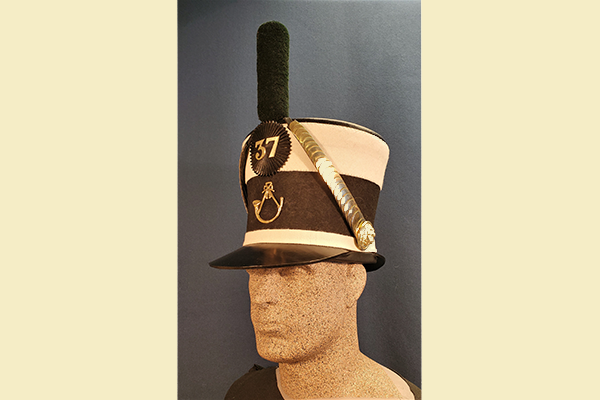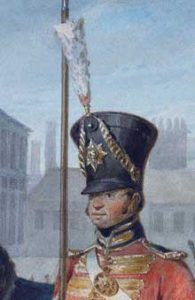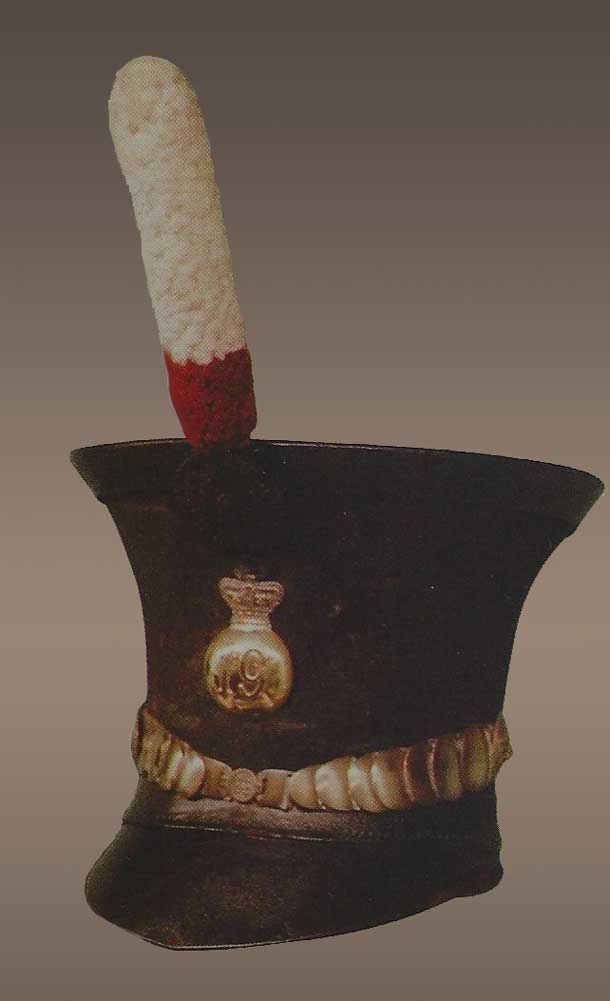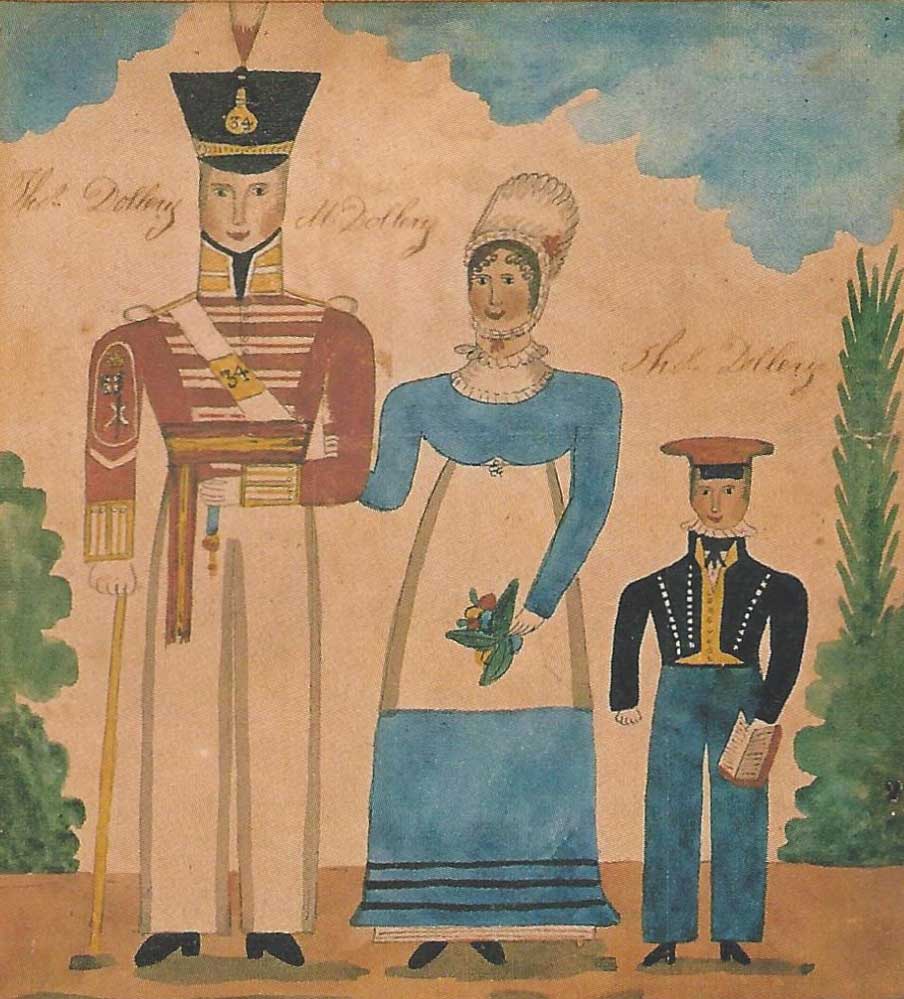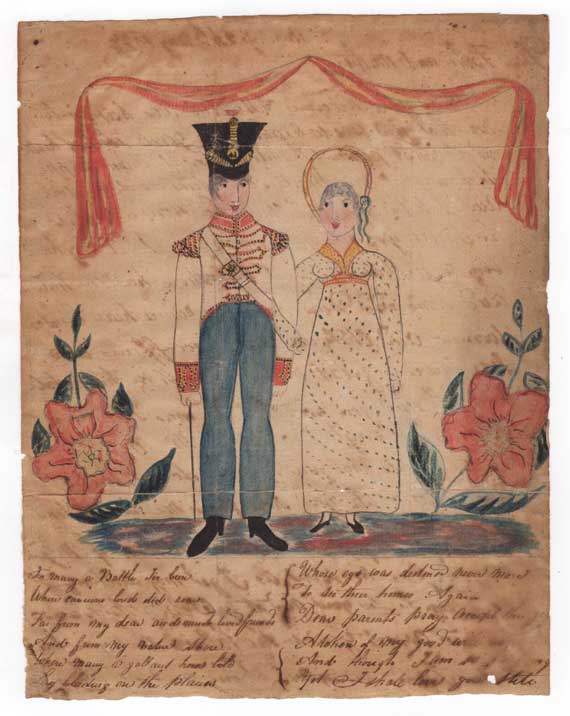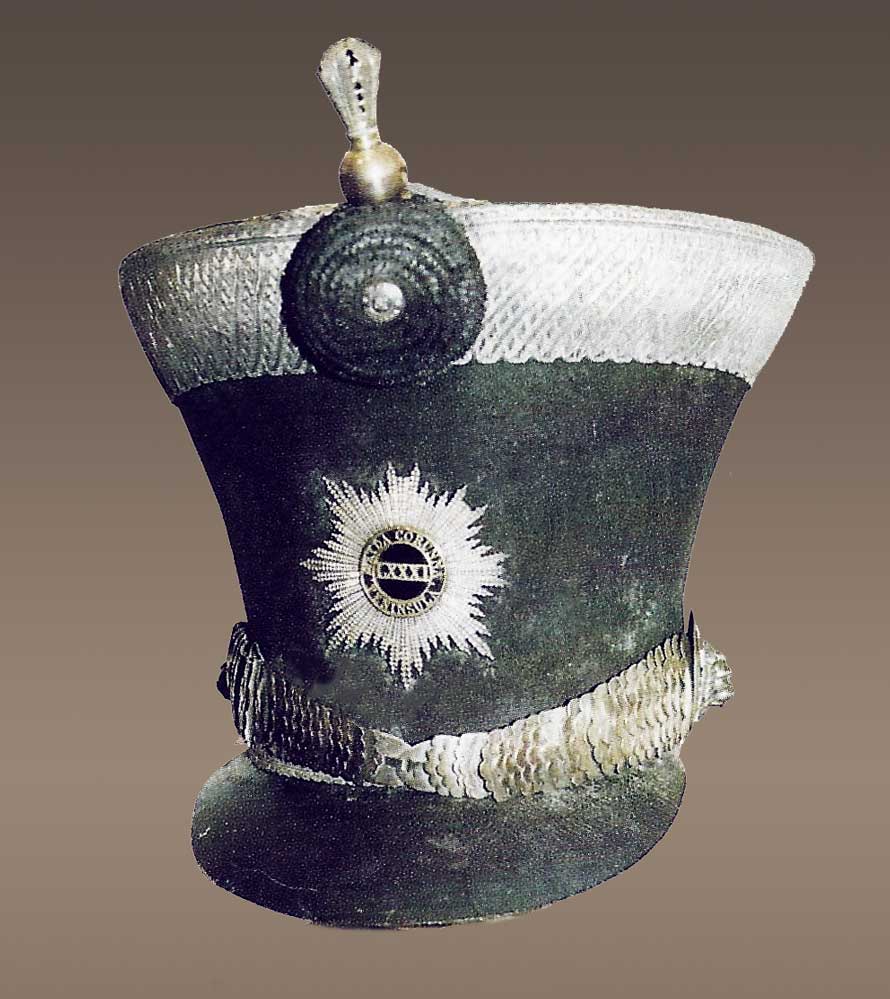Part 3 of the History of the British Infantry Shako
In August of 1815, while the Army of Occupation camped in the Bois de Boulogne, a new model cap was introduced for the British infantry. Since 1812, the influence of foreign army’s headdress designs had become immensely obvious. British cavalry regiments almost universally altered their headgear to the same profile as their French equivalents — despite Wellington’s utter disapproval. The flared leather top shako had also become the dominant fashion for the infantry. Although many armies used this look, when it was introduced into Great Britain’s army, the style was described as “Prussian.”
The stiffened wool felt bodied cap was in the shape of an inverted cone reaching about 7-½ inches in height and 9-inches in diameter at the leather covered top. Two peaks were attached, the rear one being much less deep than the front. Bands of 2-½ inch wide lace in either yellow or white, depending on the regimental officer’s lace colour, circled the top. An additional 3/4-inch band of the same colour was around the bottom edge just above the peaks. The black Hanoverian cockade was maintained at the centre front with a regimental button in the middle. Arising from the cockade for the other ranks was a worsted wool plume in the same company colours as the previous cap. The shako plates were of a new design, featuring a regimental numbered disc surmounted by a crown. This was linked to the cockade above it by brass scales. Light companies and Light infantry regiments had a bugle badge in place of the plate with the regimental number mounted on the cockade (see figure 1). The cap was secured to the head by brass lion head bosses and chin scales. The rear peak was done away with in 1822, but the height was increased by another inch.
The Coldstream and 3rd Guards wore a similar design with their appropriate regimental stars for the shako plate but dispensed with the top and bottom lace (see figure 2). The 1st Guards, having been designated as Grenadier Guards after Waterloo, wore bearskins.
There appears to be only one surviving other ranks Regency shako and it is of the 19th Foot in the Green Howards museum (see figure 3). It lacks the lace bands as do the naïve drawings of the period (see figure 4 and figure 5). It would appear at some point the bands were abolished.
Officer’s caps were of course made of superior materials. The bodies were beaver felt and the metal work was gilded and often featured bi-metallic shako plates (see figure 6 and figure 7). Although they broadly followed the design of the other ranks plates, in that they featured a crowned disc displaying the regimental number, they often placed it on a star. This Coldstream officer’s cap (see figure 8) is interesting in that it has cap cords. For the line infantry officers, there is tremendous variation in the styles of the cap plates. Many are preserved separated from their caps (see figure 9 through 12).
The elegant lines of the Regency shako were to make it one of the longest serving models of infantry cap, not being replaced until 1828.

